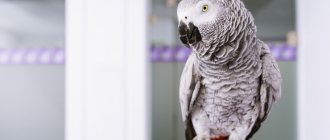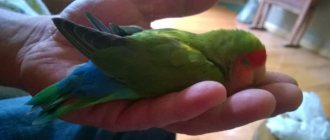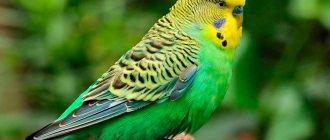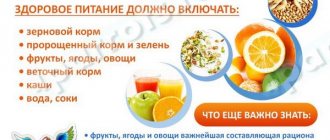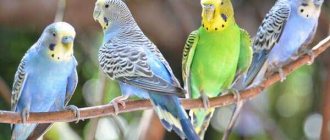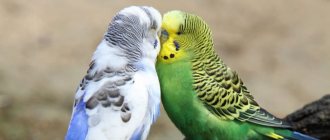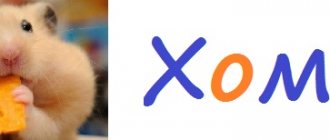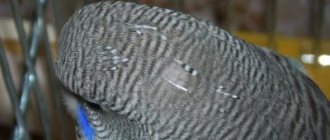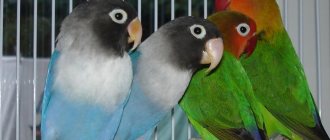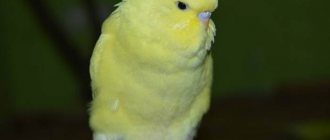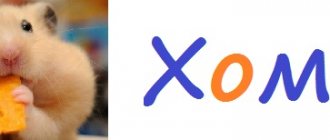- home
- Parrot
- Treatment
04/20/2019 It’s impossible not to love budgies. They are recognizable by their sociable disposition, bright motley plumage and talkativeness. And in the beak, between the eyes, nature provides a small growth of a leathery nature - a cere.
What is a cere
This area, bare of feathers, contains the sinuses, which make breathing easier. Olfactory cells in the sinuses allow birds to recognize and navigate odors. The cere serves as mobility for the upper part of the beak, which is not fused with the skull, when the bird chews solid food. Healthy parrots have a uniform color, smooth wax, without peeling or loss of integrity. When the bird breathes intensively, it becomes more humid than in the normal state, regulating heat exchange, reducing the possibility of overheating of the parrot, which normally has a much higher temperature than a person - up to +41 ° C.
The color of the beak and its uniformity accurately determine the sex of the pet, as well as a number of pathological conditions that cause early changes in the beak.
The stable color of the cere appears only when the parrot reaches one month of age. Up to 30–35 days, the tone of the growth may change throughout the day.
In older budgerigars, a change in the stable color of the beak indicates changes in health.
Why do you need to know gender?
An accurate determination of gender makes it possible to resolve a number of issues that will help avoid annoying mistakes and disappointments in the future, namely:
- Pet's name . When a chick gets into the house, he needs to immediately be given a nickname, and repeat it every time he calls. The more often a parrot hears its name, the faster it will begin to respond to it. If the nickname does not correspond to the gender, then suitable replacements will have to be found.
- Number of birds in one cage . Males live together in harmony, but females are aggressive towards their sex and perceive their neighbor as a rival. Therefore, in one territory you can keep either only males or individuals of different sexes. The female is always placed next to the “groom”.
- Character and behavior . Females tolerate loneliness more easily; they are comfortable alone with themselves. Males, on the contrary, love attention and communication, become tame faster and are more willing to make contact. They chirp and create much more fuss and noise than females.
- Ability to learn . Males master speech techniques more quickly than females. Females pronounce words more clearly, but learning usually requires more patience and time.
- Getting offspring . It is especially important not to make a mistake with the sex of the bird when chicks are expected to appear in the future. For nesting you need to create certain conditions. All efforts will be in vain if the parrots turn out to be of the same sex.
In spring and autumn, females experience a hormonal surge. Then their temperament and behavior change dramatically, they become restless, noisy, and sometimes aggressive. When hormones return to normal, the birds calm down.
We determine the diagnosis by the wax
Symptoms of diseases affecting the appearance of the cere are:
- the appearance of brown spots;
- complete color change;
- peeling of the wax, it begins to peel off;
- a tumor forms on it, a growth that can be purulent;
- the formation of ulcers, wounds, cracks and other damage.
In such cases, veterinary help should be sought immediately. Changes in the condition of the beak may indicate the development of such pathologies in the parrot as:
- lack of vitamins;
- chronic stress;
- kidney disease;
- respiratory tract or intestinal infections;
- inflammatory diseases of the reproductive system.
Taking into account such a wide range of pathological conditions that manifest themselves in changes in the appearance of the wax, only an experienced ornithologist can differentiate one from the other and prescribe the correct treatment. But for some conditions, it is also useful for the pet owner to know what can be done at home if specialized veterinary care is not available in the first hours of the onset of changes.
Who is better to choose: male or female
Females and males have their own advantages and characteristics. First you need to decide for what purposes a pet is needed in the house, and in what conditions its life will be spent. When the task is clear, the choice is easy to make.
In what cases is it better to purchase a male:
- when the owners are often at home, rarely go on business trips and are ready to devote a lot of time to communicating with the pet;
- if you want a talkative friend to appear in the family;
- so that there is more than one parrot, but at the same time eliminate the risk of offspring;
- if there are small children in the house who are ready to communicate with a feathered pet (the female can bite painfully).
The female must be selected under the following circumstances:
- when there is already a male who needs a girlfriend, and the household members are ready for the fact that chicks may appear;
- if the owners do not like a lot of noise and are rarely at home (females tolerate loneliness more calmly);
- in cases where the owners do not care whether the parrot will talk or not (females are not as sociable and talkative as males).
When the task is to purposefully breed parrots, then you need to choose birds of any sex from different breeders. Because in one place a male and a female may end up from the same parents, and they will not be able to produce healthy offspring.
Hyperkeratosis
If the color of the beak changes in the form of dark, brownish, brown spots, a slight increase, swelling of this area, or a change in the bird’s behavior to apathetic or, on the contrary, to overly active, the development of hyperkeratosis is suspected. It is a non-fatal condition that mainly affects female budgerigars by suppressing their reproductive ability. Hyperkeratosis develops due to surges in hormone levels due to a deficiency of vitamins and microelements. Therefore, first of all, the diet should be adjusted: the food should contain a high content of retinol - vitamin A, which is found, for example, in carrots, peaches, apricots, tomatoes, red bell peppers, and dandelion pulp. Protein products are needed, in particular, eggs and their shells, calcium, which birds get from crayons or sepia - the shell of cuttlefish, sold in pet stores.
Locally, the wax is treated with an ointment containing retinol. You can use Vaseline or sea buckthorn oil. To calm the parrot, reduce the length of daylight hours by covering its cage with a dark cloth. Then the bird will doze more and the stress level will decrease. It is necessary to continue therapeutic effects until the cere is completely freed from pathological changes.
Budgerigars with mixed genes
The incredible number of existing colors confirms that budgerigars are an excellent species for breeding. Most artificially obtained colors can be mixed, because birds have a special genetic predisposition to this. If the parents have a similar genotype, then their chicks will have more pronounced dominant traits.
On a note! Gene mutations give beautiful, unusual colors, but affect the health of birds. Artificially bred parrots often get sick and live shorter lives than individuals with natural feather color.
Purple factor
Only by delving into the genetic subtleties can one understand the specifics of obtaining blue and purple budgies. Their appearance is based on a primary mutation of normal color. A bluish tint occurs only if there is a violet factor in the genes. Moreover, the final coloring will range from lilac to bright blue. It also depends on the gray factor.
Visually, three combinations can be distinguished:
These combinations were fixed by the WBO organization when working on the table of Standards. The level of color change depends on the set of genes of a particular bird. The main features of a parrot with a violet factor are similar to those possessed by blue or cyan representatives: the same spots on the beard, a white base, a black pattern on the back and wings, and a blue-green tail.
Knemidocoptosis
A deadly disease caused by parasitic mites on the body of a parrot. They live in the folds of feathers, on the paws, and around the cloaca. Infection of poultry occurs through poor-quality grain mixtures, in the absence of heat treatment of accessories in the cage, or when hidden forms of mites enter the cage.
On the beak, parasites gnaw through microscopic tubules. Then the budgie's wax and beak peel off. These areas enlarge, swell, ulcerations and wounds appear on the paws, beak, and around the eyes, causing severe itching, painful for the parrot. The color of the cere changes to gray-cream, dark brown, and yellow. Spongy, porous growths on the beak are possible.
The disease is similar to human scabies, but is incomparably more dangerous for birds. In the absence of proper care and treatment, the toxic waste products of ticks can cause poisoning of the parrot's body, systemic dermatitis, inflammatory changes in the joints, and necrosis will develop. The parrot may die.
For humans, such mites are not dangerous: they live on human skin for no more than 2 days and die in the absence of conditions for survival. In budgerigars, the reproduction and activation of mites is facilitated by a deficiency of nutrition, vitamins, prolonged stress of the pet, and various infections.
To treat knemidocoptic mange, the parrot is isolated from its fellows. Use aversectin ointment and other Vaseline-based ointments 2 g/day for 5 days on painful areas, excluding the eye area and feathers. The dense structure of Vaseline prevents ticks from moving and breathing. In this case, they die within a few days. After a course of treatment, it is repeated after 2 weeks to prevent relapse. It is also necessary to disinfect the parrot's cage and all equipment. This requires antiseptic sprays that are non-toxic to parrots. You can use regular boiling water.
If there were several pets in a cage, and only one had knemidocoptic mange, all of them still need to be treated with ointments.
Rare colors and mutations
All budgies are cute and cute, but who doesn't dream of an outstanding pet! Of particular interest are birds with impressive colors. It is extremely difficult to plan the appearance of “exclusive” chicks. Not all cases of experimentation produce beautiful birds, but, nevertheless, this is a rare success for breeders.
Crested
These parrots can have any feathers on their body - green, blue or in various combinations. A mandatory feature is a crest on the head: in the form of a bun, forelock, flattened or fluffy cap. The crest can cover the eyes completely, opening like a fan. Particular chic is if long, voluminous feathers on the crown grow from two points, located symmetrically. In some cases, the back of the bird is covered with tufts of feathers in a chaotic manner.
Crested budgie
Rainbow
Quite a rare bird - a representative of the blue section of the Standards. This is not a mutation, but only a combination of color and wavy lines. Created by selecting and crossing yellow-faced parrots. The result is a very beautiful bird: a yellow mask, blue feathers on the body, pearly wings, a fuzzy opaline pattern.
Factors affecting iridescence:
The rainbow combination looks more vibrant if the purple factor is used rather than the gray factor.
Saddlebacks
Parrots of this color have a “telling” name - dark markings are visible in the area of the back (“saddle”). The wings are gray, and the main color can be yellow-green, white-blue, and other variations. There are spots on the head, but in small quantities. The markings do not show the main body color. The forehead and crown are free from spots.
Saddle budgerigar
Black (anthracite)
Blue parrots, first bred in one of the nurseries in Germany. The new mutation suggested a rich dark color of feathers, almost black. The contrast is characteristic: against the background of coal plumage there is a snow-white facial mask. Black waves begin at the back of the head, then smoothly move to the back and cover the wings. Wavy flowers of this color look so unusual and impressive, as if they were dressed up for a festive event!
Black budgie
So, you have become acquainted with the most famous and original colors of budgerigars, and have seen how these birds look in the photo. Now it will be easier for you to make a choice in favor of one or another representative of the birds.
Source
Necrosis
The disease, which is deadly for the budgerigar, is manifested by peeling and flaking of the cere with a change in its color to brown. The causes are untreated and improperly treated rhinitis, hormonal disorders and infections, circulatory disorders in both males and females.
When the flaky particles are removed, depressions are formed with the release of pus. The tissues near the parrot's nostrils become necrotic and fall off. Such an affected wax in a budgerigar can only be cleaned in a hospital, with complete sterility. At home, you can damage the respiratory channels of the nostrils. The procedure is carried out under anesthesia with the subsequent administration of antibiotics and vitamins to the bird to strengthen the immune system.
Varieties of colors
To control the breeds of budgerigars, the World Budgerigar Organization was created, the standards of which determine the classification of colors. According to the Standard, a parrot with feather streaks is considered normal. Breeding uses a combination of four factors:
Various combinations of shades influence the appearance of more and more new colors.
Standard color
The traditional color is light green: these feathers cover the lower part of the parrot's body (chest, belly, undertail). The back and wings are much darker, and are decorated with a black wave pattern. The longest tail feathers on the tail are blue. The crown, facial mask and throat part are light yellow. Symmetrically located dark spots on the sides of the beard. There are purple markings under the eyes.
Standard color
Opaline coloring
These are the birds in the blue and green rows of the Standards table. Features of birds with this coloring:
Opaline parrots become breeders to produce rainbow chicks.
Spangle or star coloring
Australian birds with an original inverted pattern were bred in 1974. This type of budgerigar was called “spangle” - bugles translated from English. The second name is “star-shaped”. A lace pattern on the tail and wings, the bulk of the feathers are white or yellowish with a dark frame. The body looks pale and the pattern resembles marble. In the Standards plate, lace color refers to the blue and green positions. This mutation is a phenomenon: it contains a place for a brightening agent, without which a two-factor spangle is impossible.
Spangle
Cinnamon
Cinnamon-colored parrot Pastel colors and silky plumage make cinnamon-colored birds very attractive. They should not be confused with brown-winged parakeets, which are very rare.
Yellowface
Types of Yellow-faced Parrots:
Yellow-faced Parrot Most representatives of the species are completely covered with yellow feathers, but there are individuals only with a lemon-colored facial mask.
Greywing
It can be said about these birds that they are distinguished by one feature - gray wings. The rest of the body is painted in any color, bright or lightened, and the waves are dark gray, indistinct, slightly blurred.
Grey-winged budgie
Lyutino
Lutinos are obtained from green series producers. They are yellow, like egg yolk. There is absolutely no black pigment, just pure yellow and white feathers. There are small spots on the cheeks that shimmer with mother-of-pearl. Paws are pink. Most often, the lutino color is found in females, but there are also male lutinos if they receive this gene from both parents.
Albino
A white budgerigar bred by crossing blue birds. A characteristic feature is the absence of gray and blue plumage. The bird has pale pink legs, like lutino's, and red eyes. The color is gender-linked.
Albino
Clearwing
Judging by the name, we can conclude that a clear-winged parrot should have wings painted in a pure shade, uniform, without foreign inclusions. Individuals in the blue classification column are blue, purple, gray or blue. They are united by one factor - white flight feathers and the base of the back. Other parts of the body are full color.
Clear-winged budgie
If the bird is greenish in color, then its wings are yellow. Most often, the pattern on the wings is still present, but it is only slightly visible. The tail is paler than that of differently colored birds.
Variegated colors
Variegated budgies are birds with colorful spots on their bodies. The markings may be multiple or one large spot, for example, on the back of the head. The pigment is suppressed in random order. The result is an indefinite pattern, interrupted by white, green or yellow marks. These parrots are small in size.
Half coloring
The hybrid breed, which appeared in Denmark, received the colloquial name “Harlequin”. A bird with half coloring looks very impressive: its body is divided by color into two approximately equal parts. This can be a vertical division or a horizontal one. The crop is yellow and the abdomen is blue. Or, for example, the left side of the sternum and abdomen is green, and the right side is blue. Unusual coloring is not inherited. Among breeders, harlequins are considered special luck.
Dry waxwort
Budgerigars sometimes have dry wax. This is due to violation of care and nutrition conditions. Even the absence of a friend, a partner for the parrot, in the cage, causing severe stress, contributes to the occurrence of dry wax. The bird needs rest and quality drinking water - it is better to use bottled water for small children. It is worth keeping a humidifier in the room where the bird lives.
To prevent dryness of the beak, there must be a bath in the cage. Feed enriched with vitamin-mineral complexes is necessary. You should not allow your feathered pet to eat indoor flowers, as they may contain allergens.
Periodically, in order to prevent the wax from drying out, you can apply Vaseline oil to it.

